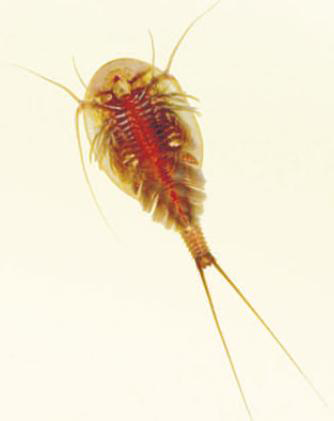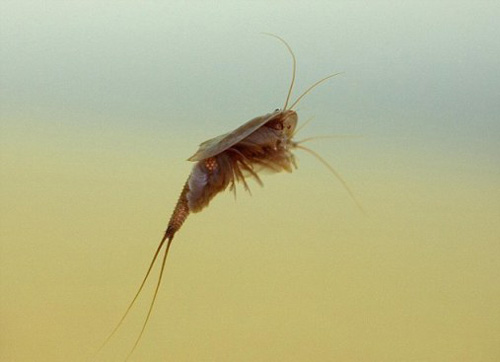A rare species of shrimp is believed to be the world's oldest animal discovered by scientists scouring at Caerlaverock Nature Reserve on the Solway coast, Dumfriesshire County, Scotland.
According to Independent (UK) magazine, the two tadpole shrimp, Triops cancriformis, were found at the site, but experts say there are more shrimp are 'hidden' elsewhere in the region.
After comparing the fossilized shrimp fossils previously found, the researchers found that the 'living fossil' of this shrimp is almost unchanged compared to that they lived 200 million years ago when the dinosaurs First evolution.


Guardian magazine (UK) said that wild tadpoles can develop body length up to 10 cm and have an unusual 'life cycle' .It adapts to the temporary life in the lakes in the Caerlaverock wetlands, the purpose of which is to lay eggs.When the water season runs out, the mature tadpoles die and the eggs will lie on the bottom of the lake until the flooding season comes, the eggs hatch and a new life cycle begins.
By understanding the strange life cycle of tadpoles, researchers at Glasgow University (Glasgow, Scotland) have discovered many interesting things about this endangered rare species.The mud blocks at the bottom of the lake belong to the Caerlaverock area, which they think is contained in the shrimp eggs that were collected, then they are dried and re-moistened before being placed in the small aquatic aquariums in the laboratory. .
Scientists were surprised to discover a cavalier swimming tadpole in an aquarium within a few weeks.
Source: Independent, Guardian
 Animal 'suffering' after hibernation
Animal 'suffering' after hibernation Why do goats climb well?
Why do goats climb well? Scientists were surprised to see chimpanzees eating turtles
Scientists were surprised to see chimpanzees eating turtles Giant catfish died deadly due to drought in Thailand
Giant catfish died deadly due to drought in Thailand